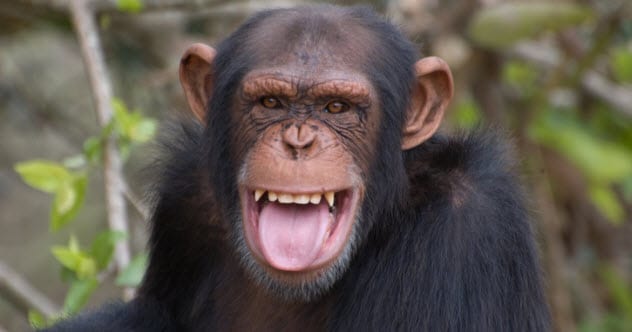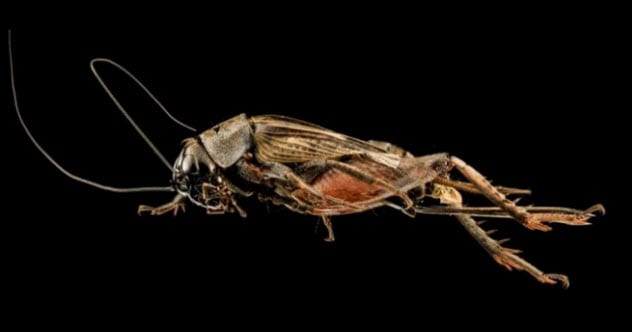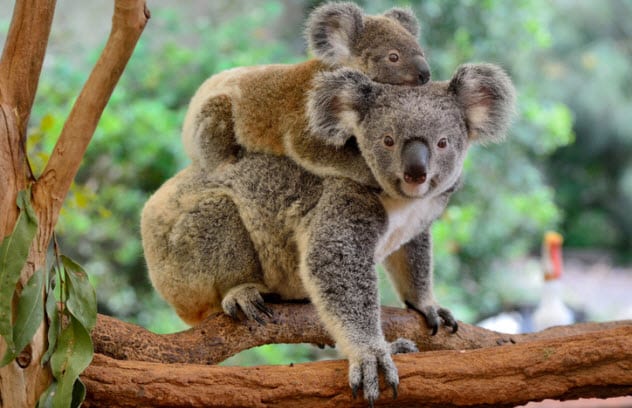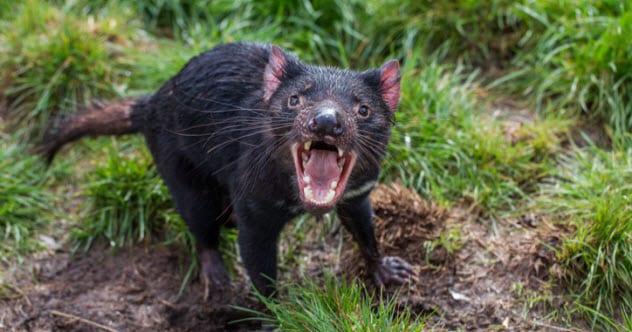 Technology
Technology  Technology
Technology  Humans
Humans 10 Everyday Human Behaviors That Are Actually Survival Instincts
 Animals
Animals 10 Animals That Humiliated and Harmed Historical Leaders
 History
History 10 Most Influential Protests in Modern History
 Creepy
Creepy 10 More Representations of Death from Myth, Legend, and Folktale
 Technology
Technology 10 Scientific Breakthroughs of 2025 That’ll Change Everything
 Our World
Our World 10 Ways Icelandic Culture Makes Other Countries Look Boring
 Misconceptions
Misconceptions 10 Common Misconceptions About the Victorian Era
 Mysteries
Mysteries 10 Strange Unexplained Mysteries of 2025
 Miscellaneous
Miscellaneous 10 of History’s Most Bell-Ringing Finishing Moves
 Technology
Technology Top 10 Everyday Tech Buzzwords That Hide a Darker Past
 Humans
Humans 10 Everyday Human Behaviors That Are Actually Survival Instincts
 Animals
Animals 10 Animals That Humiliated and Harmed Historical Leaders
Who's Behind Listverse?

Jamie Frater
Head Editor
Jamie founded Listverse due to an insatiable desire to share fascinating, obscure, and bizarre facts. He has been a guest speaker on numerous national radio and television stations and is a five time published author.
More About Us History
History 10 Most Influential Protests in Modern History
 Creepy
Creepy 10 More Representations of Death from Myth, Legend, and Folktale
 Technology
Technology 10 Scientific Breakthroughs of 2025 That’ll Change Everything
 Our World
Our World 10 Ways Icelandic Culture Makes Other Countries Look Boring
 Misconceptions
Misconceptions 10 Common Misconceptions About the Victorian Era
 Mysteries
Mysteries 10 Strange Unexplained Mysteries of 2025
 Miscellaneous
Miscellaneous 10 of History’s Most Bell-Ringing Finishing Moves
10 Sexually Transmitted Infections Found In Animals
One out of four humans will die due to a sexually transmitted disease. It’s something that we’ve all been taught to protect ourselves from, even if everyone isn’t as diligent as they should be.
However, while many sexually transmitted illnesses are commonly known to affect humans, we aren’t the only species on the planet that can contract them. From HIV to herpes to brucellosis, the animal kingdom has its own fair share of problems when it comes to sexually transmitted infections (STIs).
10 Papillomavirus

Some mammals of the sea are known for their vast intelligence and for saving humans from sharks. But they also have the ability to contract genital warts through papillomavirus. Most commonly found in Atlantic bottlenose dolphins, genital warts are caused for the same reason that STIs are seen in humans: unprotected sex.
Mammals are most likely to be hosts of STIs, and bottlenose dolphins are not an exception. Increased contaminants in the water have compromised dolphins’ immune systems, making them more likely to contract STIs. While this has become a problem for bottlenose dolphins, learning from them has helped humans because dolphins and humans have similar types of papillomaviruses.
This is beneficial because dolphins have contracted these infections—and the resulting genital warts. But they have not developed cancer, one of the main results for human women with HPV.
Though there isn’t an indication that genital warts have been spread from bottlenose dolphins to humans, different types have been shown to exist and are being monitored by scientists.[1]
9 Syphilis

Cute, fluffy, and able to multiply prodigiously, bunnies are adorable creatures that can often be found as pets. They are also carriers of an STI which is shared with humans: syphilis.
With almost 12 million new cases appearing each year in humans, understanding how syphilis spreads and what vaccines can aid in preventing and treating this infection will be beneficial for humans and rabbits. Treponema paraluiscuniculi, the bacteria associated with syphilis in rabbits, is different from that found in humans and cannot be spread from rabbit to human.
Still, a large population of rabbits has already contracted syphilis. According to researchers, syphilis in rabbits cannot be contracted in vitro. However, it can be spread from mother to child during pregnancy or at birth. In New Zealand, syphilis is a growing problem for humans and white rabbits.
In the late 20th century, Africa saw a syphilis epidemic in their baboon species, both in the wild and in captivity. The strain was different than the one contracted by humans but spread rapidly before treatment could be given in some cases.
However, the reason for the outbreak was unknown and the levels seen during this period have dropped dramatically. Only a few cases of baboons have tested positive for the infection since then.
As with humans, antibiotics can help to treat syphilis in animals if it’s caught in time.[2]
8 Herpes

Herpes is not just a disease transmitted by humans. Many cases of herpes have been found in the animal kingdom—from elephants to reptiles to fish and even oysters. Herpes has a long history of infecting primates . . . and rabbits.
Rabbits can host the herpes virus and infect humans the same way that other primate species do: through bites or scratches. It can also be done the other way around. One study found that an owner gave his rabbit a human strain of herpes virus through saliva contact.
The herpes simplex virus in baboons varies from the kind seen in humans and can also be transmitted to humans from other primate species through a bite or scratch. Due to the differences in strains, the results can be deadly if not treated properly.
The types of herpes virus seen in various primates differ. For example, the one in baboons is similar to the kind in monkeys rather than chimpanzees or gorillas. Each primate species has its own strain of the herpes virus. Some researchers speculate that the herpes virus seen in humans is so similar to the chimpanzee virus because there was a common ancestor millions of years ago.
Baboons in Africa are battling a herpes strain that has scientists baffled. They are unsure where it originated or how it manages to spread so quickly. A total of 200 baboons have been infected. Although there have been no cases of human infection with this strain, the possibility of transmission may exist.[3]
7 HIV

HIV is found in humans and other primate species. In fact, a recent discovery has shown that chimpanzees and gorillas may have been the original hosts of HIV.
As HIV spreads one million times faster than DNA can adapt, knowing where to look is key. Gorillas and humans share 98 percent of their DNA as well as the origins of HIV. Around 20 million people are affected by a type of HIV found in gorillas from Cameroon. Although HIV is usually spread from primate to primate through sexual intercourse, it’s speculated that the type given to humans came from eating infected meat.
HIV can be given to humans from other primate species through blood-to-blood contact, such as bites or ingesting infected meats. A study found that a specific group of chimpanzees in West Africa tested 90 percent positive for having a virus similar to the HIV found in humans and that it was only spreading.[4]
While chimpanzees are known to have HIV, none of them demonstrate an illness similar to AIDS, which is an oddity as humans and chimpanzees share similar genetic structures.
6 Brucellosis

One of the most common sexually transmitted diseases in the animal kingdom is brucellosis (aka undulant fever), which can affect animals from livestock to those in the wild. Brucellosis is dangerous to animals due to its prevalence, but it also poses a threat to humans with possible long-term effects.
Brucellosis appears often in livestock and other domesticated animals as well as in deer. This disease is usually sexually transmitted among animals, but it can be shared between species by coming into contact with an infected animal or their infected meat.
Humans can contract brucellosis similarly—through ingestion of infected meat or cheese, contact with an infected animal, or drinking infected milk. While around 100–200 cases are seen yearly in humans, the results are rarely deadly. However, animals that aren’t treated quickly are not always as lucky. Symptoms range from the signature fever to vomiting, fatigue, diarrhea, and blurred vision.
Although few cases of brucellosis are spread from human to human through sexual contact, individuals who have had sexual intercourse before realizing they’ve contracted the illness are more likely to spread it to their partners. Studies have also found that when people are infected with brucellosis, medical follow-ups may be required to ensure that the virus hasn’t developed into a chronic condition.[5]
5 Feline Immunodeficiency Virus

In 2017 alone, 940,000 humans died from AIDS-related illnesses. Although new treatments have become available, why AIDS affects humans and not other primate species is a question that is being asked. However, cats are not always so lucky.
Feline immunodeficiency virus (FIV) targets only cats and can be transmitted through bites and scratches, birth, and even semen. This virus comes from the same strain as HIV. However, we don’t know why FIV is the only non-primate virus to produce AIDS-related illnesses. With both HIV and FIV, the resulting AIDs-related illnesses can end in death.[6]
While FIV does have a vaccine, HIV does not. This is because HIV goes through multiple mutations while FIV has only five known strains that result in AIDs-related illnesses.
4 IIV-6

Although this STI renders the host infertile, it also increases the host’s desire to mate. The infection known as IIV-6 affects cold-blooded insects, mostly crickets.
This sexually transmitted disease has become a particularly bad problem for cricket colonies. As the infected male hosts experience an increased need to mate, they spread the infection from partner to partner. The disease renders the infected males and females infertile, making it impossible for the crickets to continue breeding. The longer the host is infected, the higher the likelihood that the cricket will eventually die from this infection.
As IIV-6 is a DNA-based infection, the mutation of the disease is a possibility that many scientists are trying to stop. While the disease has existed for around a decade, the infection has increased in different colonies of crickets, spreading in a way that may start to affect other invertebrates.[7]
3 Chlamydia

Chlamydia is an infection often seen in humans, affecting both women and men equally via sexual intercourse. Although over one million people have been diagnosed with chlamydia, it is one of the most easily treatable STIs seen in humans. For the animal kingdom, however, the disease is not as curable.
Chlamydia affects a variety of animals, from birds to mammals to reptiles. However, its strain is different than the one seen in humans, making it harder to treat. This has become a major problem in koalas, whose numbers are already dwindling due to hunting and loss of habitat.
Up to 50 percent of koalas under care in Queensland and New South Wales have tested positive for chlamydia. The rapid spread of the disease in koalas has become a major point of concern. It can quickly affect the mammals, but they don’t show any outward symptoms.[8]
Once the symptoms progress to coughs and respiratory complications, chlamydia can result in infertility in koalas and even in death. Although the infection isn’t usually fatal, it can have serious negative effects on the koala’s health.
While the strain of chlamydia in koalas is quite different from that in humans, the possibility of a vaccine for koalas can be helpful for the development of a model to vaccinate humans.
This is especially crucial because chlamydia can spread from birds to humans in addition to human-to-human transmission. When the infection is spread from bird to cat, it mutates and turns into a feline-specific version.
This also happens when humans come into contact with infected birds. The specific infection is called psittacosis. Rare occurrences of bird to cat to human transmission have also been found.
2 Venereal Tumors

Although humans don’t “catch” cancer from one another, the ability to sexually transmit cancer does occur in the animal kingdom. Mammals are the most vulnerable to venereal tumors. Currently, the number of Tasmanian devils is dwindling due to the rapid rise in venereal tumors that have spread during mating.
Tasmanian devil facial tumor disease (DFTD) has been affecting these creatures for 20 years. It happens when Tasmanian devils bite one another during mating, resulting in cancerous facial tumors which have killed off almost 95 percent of the population since 1996.
As scientists tried to develop a vaccine to combat this, a second strain appeared. These two strains are two of the four transmissible cancers, three of which are transmitted through sexual intercourse in the animal kingdom.
The third venereal tumor is found in dogs, affecting both males and females equally and occurring naturally. Although HPV can lead to cancer in human women if not treated, canine transmissible venereal tumor (aka CTVT or Sticker’s sarcoma) is a cancer that is passed between dogs only. It has not mutated to affect humans or other animals.[9]
CTVT has developed a way to adapt dogs’ genes to survive in almost a parasitic form. Even though this disease has several mutations, each variation includes the same gene from the original dog that was first infected. CTVT can be treated with chemotherapy.
1 Gonorrhea

Many people have speculated as to how gonorrhea, one of the oldest and most rampant STIs, came to be shared by cows and humans. One of the most prominent and unsettling theories focuses on an interspecies relationship that might be plausible but is more unnerving than anything else.
Due to the nature of gonorrhea, it’s unlikely that humans would have contracted the illness by eating infected meat. Cows aren’t the only animals affected by gonorrhea, either. Sheep, dogs, and even chimpanzees are susceptible to contracting gonorrhea.[10]
However, with millions of people worldwide diagnosed with gonorrhea each year, understanding the illness is important for developing vaccines. Due to its adaptability and means to cross species, gonorrhea has been a difficult disease to fight.
With more antibiotics fed to sheep, pigs, and cows, the various strains of the disease have also become resistant to vaccines that are being created. Gonorrhea can mutate and adapt, which makes it harder to treat in both humans and animals. In turn, this can create a larger outbreak.
Read more unusual stories about animals on 10 Strange Syndromes That Only Affect Animals and 10 Unusual Stories Involving Drunk Animals.








